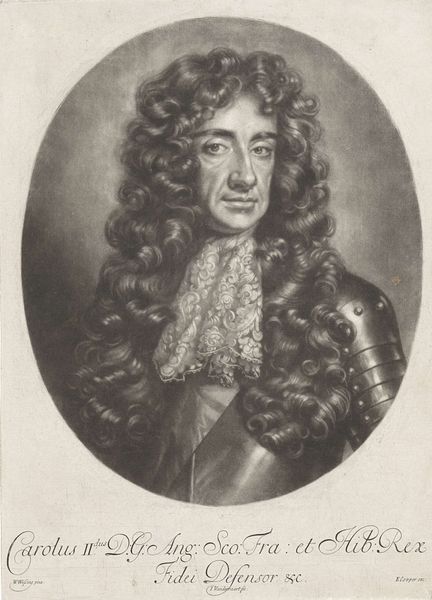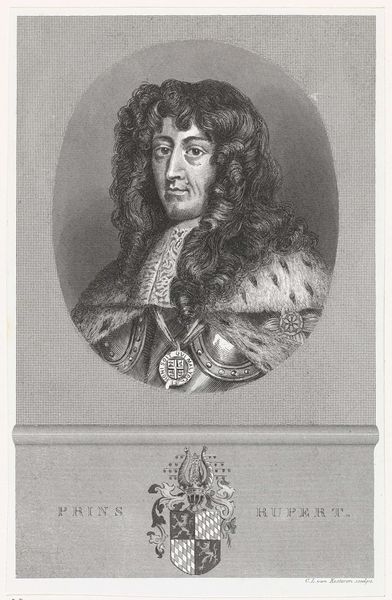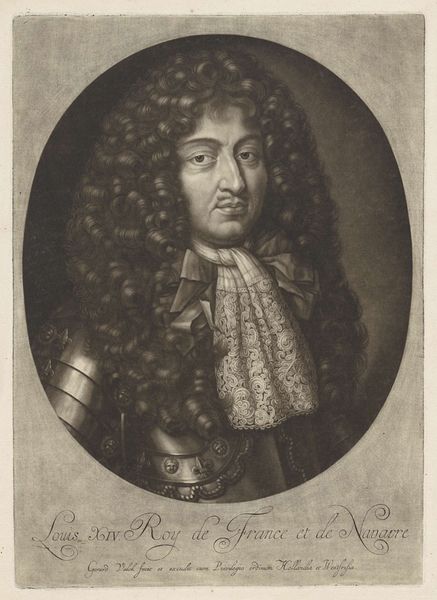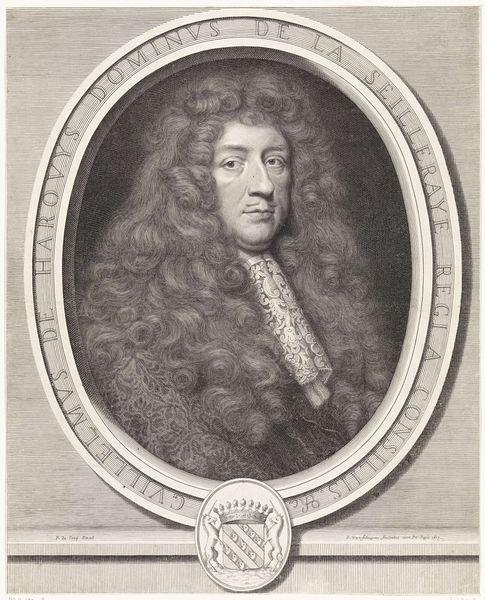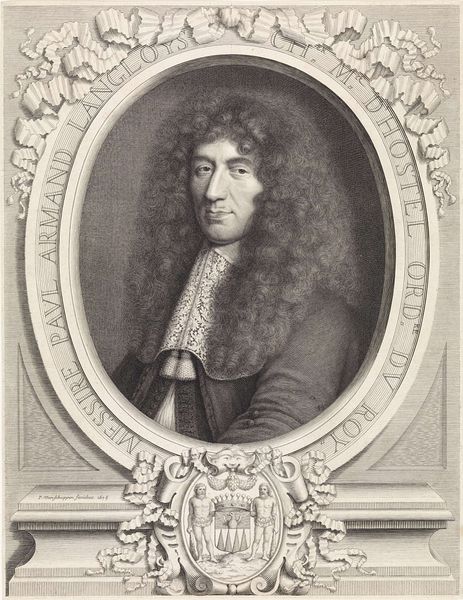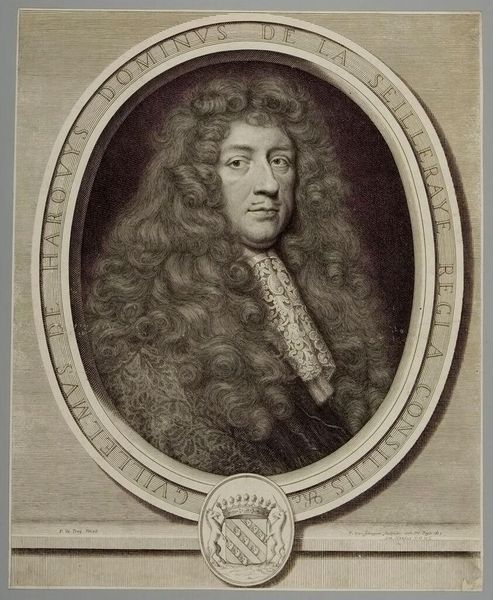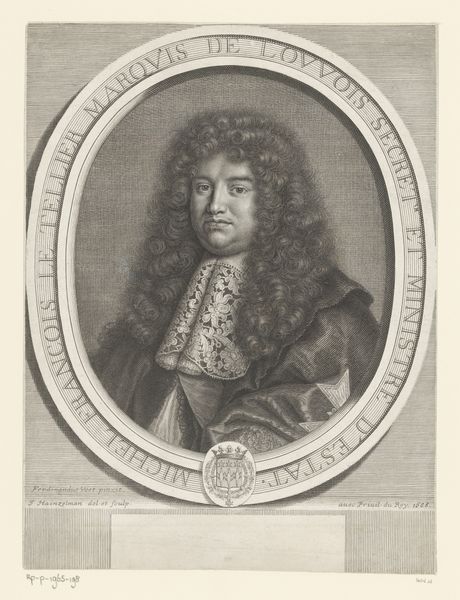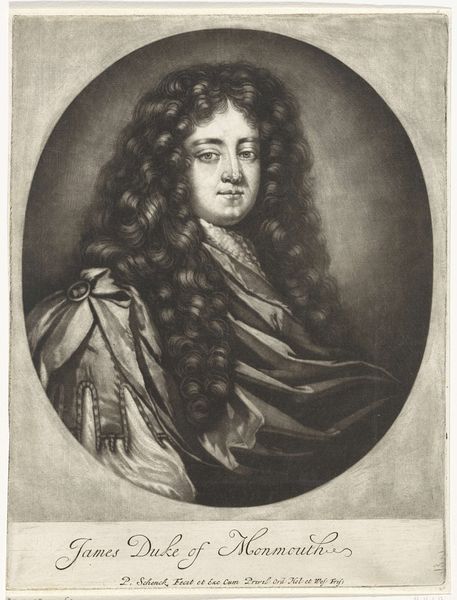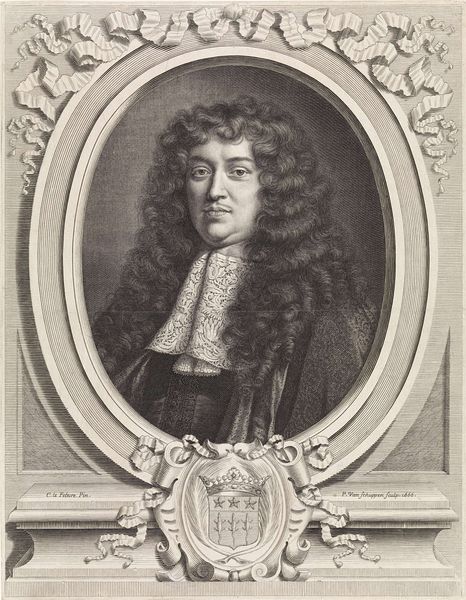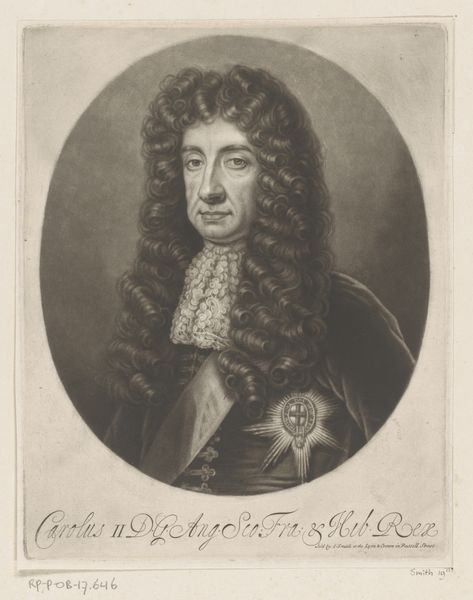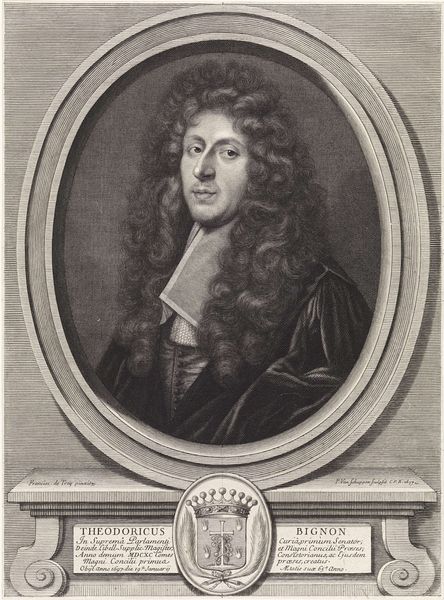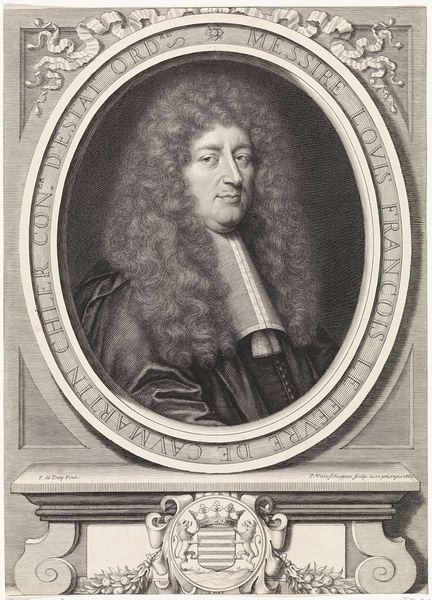
Portret van Karel II, koning van Engeland 1842 - 1897
0:00
0:00
christiaanlodewijkvankesteren
Rijksmuseum
Dimensions: height 205 mm, width 126 mm
Copyright: Rijks Museum: Open Domain
Curator: This is a portrait of Charles II, King of England, crafted between 1842 and 1897 by Christiaan Lodewijk van Kesteren. It's an engraving, a print, housed here at the Rijksmuseum. Editor: It feels immediately… theatrical. All that dense, curly hair framing his face—it's like a stage curtain pulled back on a performance of royalty. Curator: It’s important to consider how depictions of Charles II evolved and reinforced notions of monarchy and power dynamics of the era. Think about the Restoration after Cromwell. What was Van Kesteren, as an artist, commenting on when creating it in the later 19th Century? Editor: Van Kesteren utilizes the symbolic language of the time to great effect. The swirling hair isn’t just a fashion statement; it’s an assertion of virility, of power unrestrained. And the armour... it is interesting that a King associated more with art than the battlefield is here adorned in what appear to be battle dress. Is this to do with solidifying his rule? Curator: Indeed. We cannot disentangle depictions from social and political factors. Charles II needed to actively reconstruct notions of the British crown and assert not just a right to rule but also his kingly image, in light of the events that led up to his succession to the English throne. It is worth reflecting on how we understand gender and power reflected in symbols such as this. The performativity is evident, is it not? Editor: Absolutely, and the choice of engraving as a medium speaks to accessibility and reproducibility, something that would democratize his image in a sense, while still controlling it. How would this portrait, displayed across a wide variety of mediums have acted as propaganda and as reassurance? The royal coat of arms, featured prominently below, repeats this. I suppose it reinforces that symbolism. Curator: A keen observation. It's crucial we don't just passively observe historical artworks, but consider who benefits from their existence and how they perpetuated potentially problematic ideologies about the world. Editor: Looking at the iconography allows me to appreciate the layers of meaning imbued into something seemingly straightforward. It provides access to cultural memory. Curator: And contextualising helps us to be critical of this memory and those benefiting from the cultural symbolism of depictions such as this. Editor: Together, the art historical understanding and symbolic deconstruction can provide a broader understanding.
Comments
No comments
Be the first to comment and join the conversation on the ultimate creative platform.
